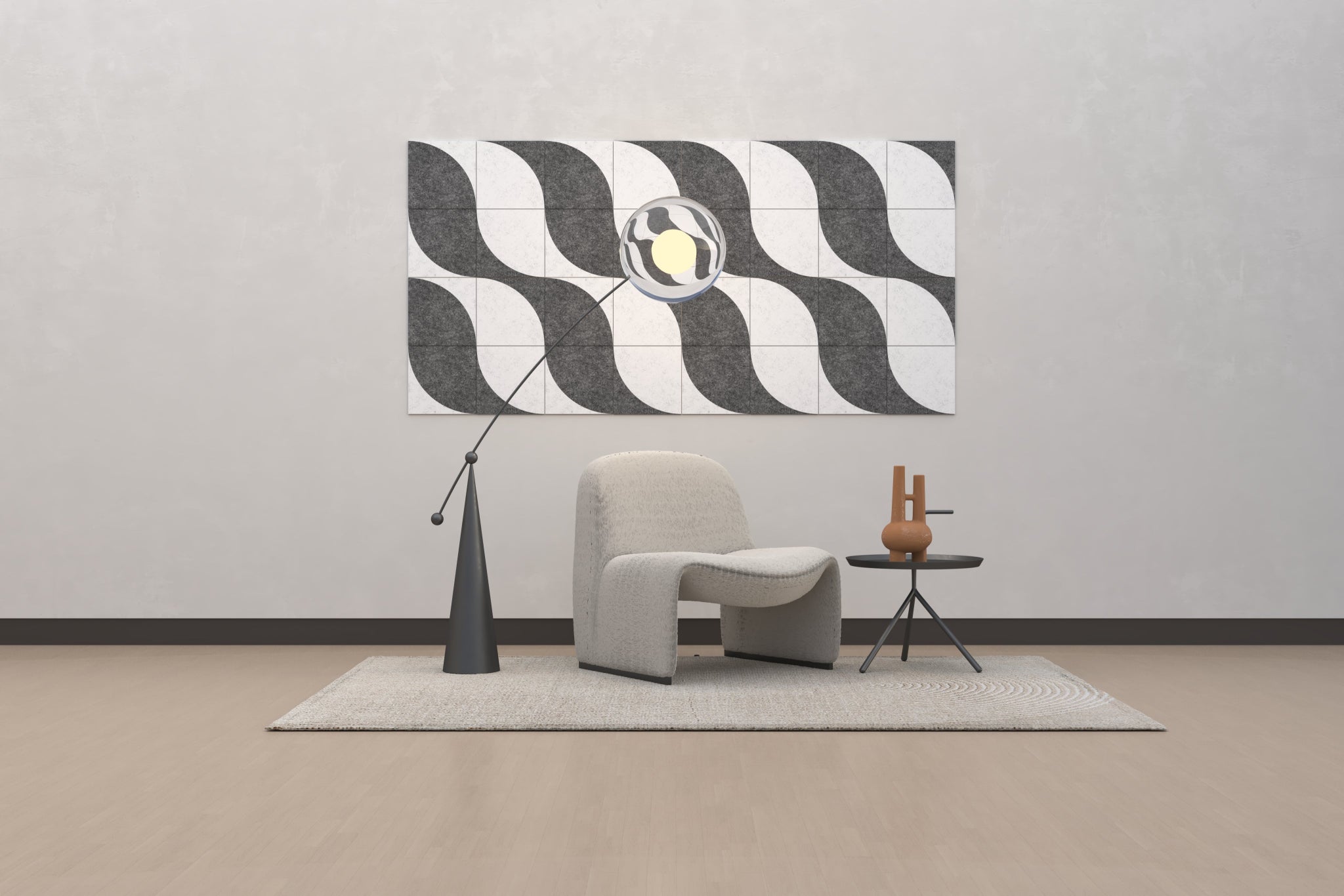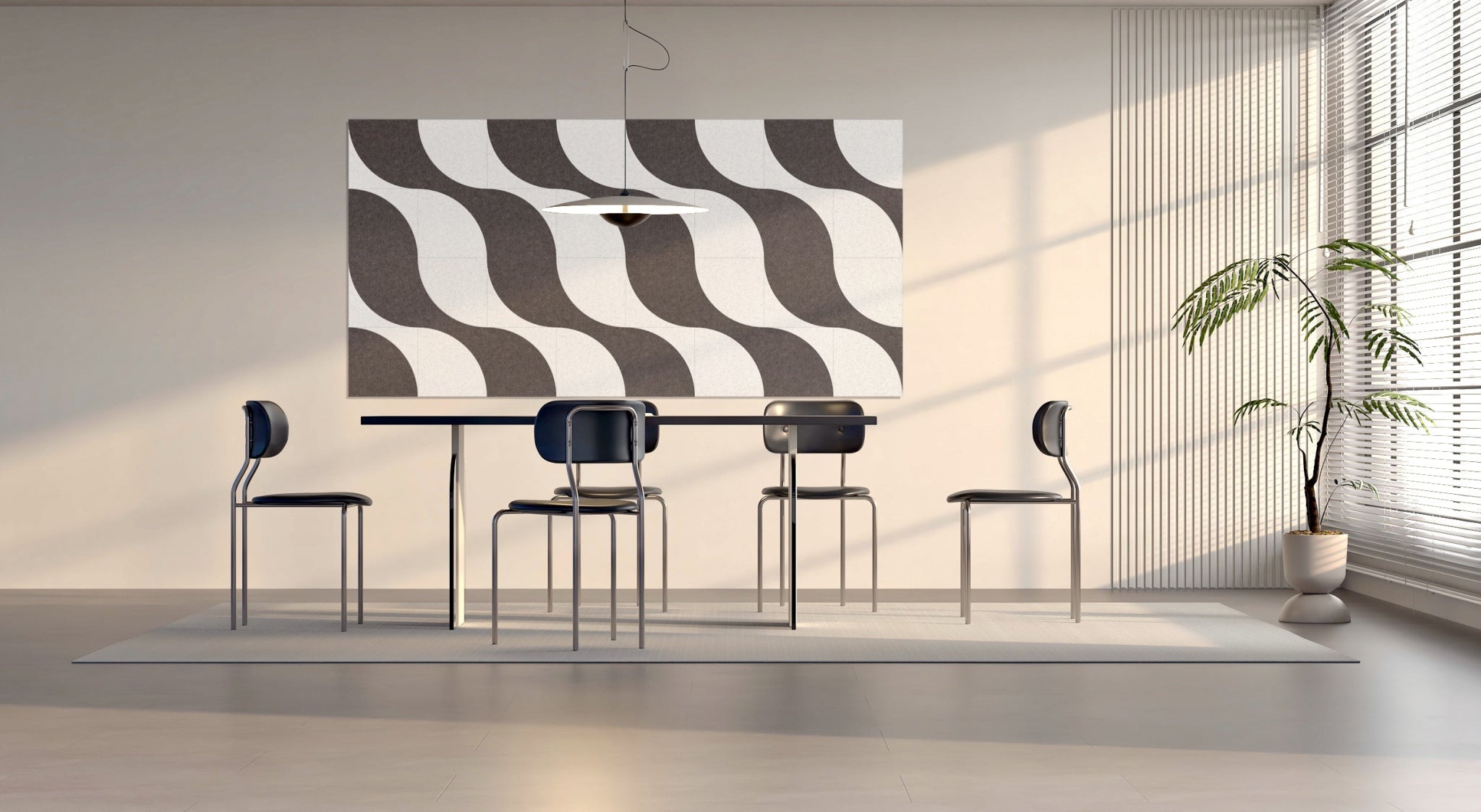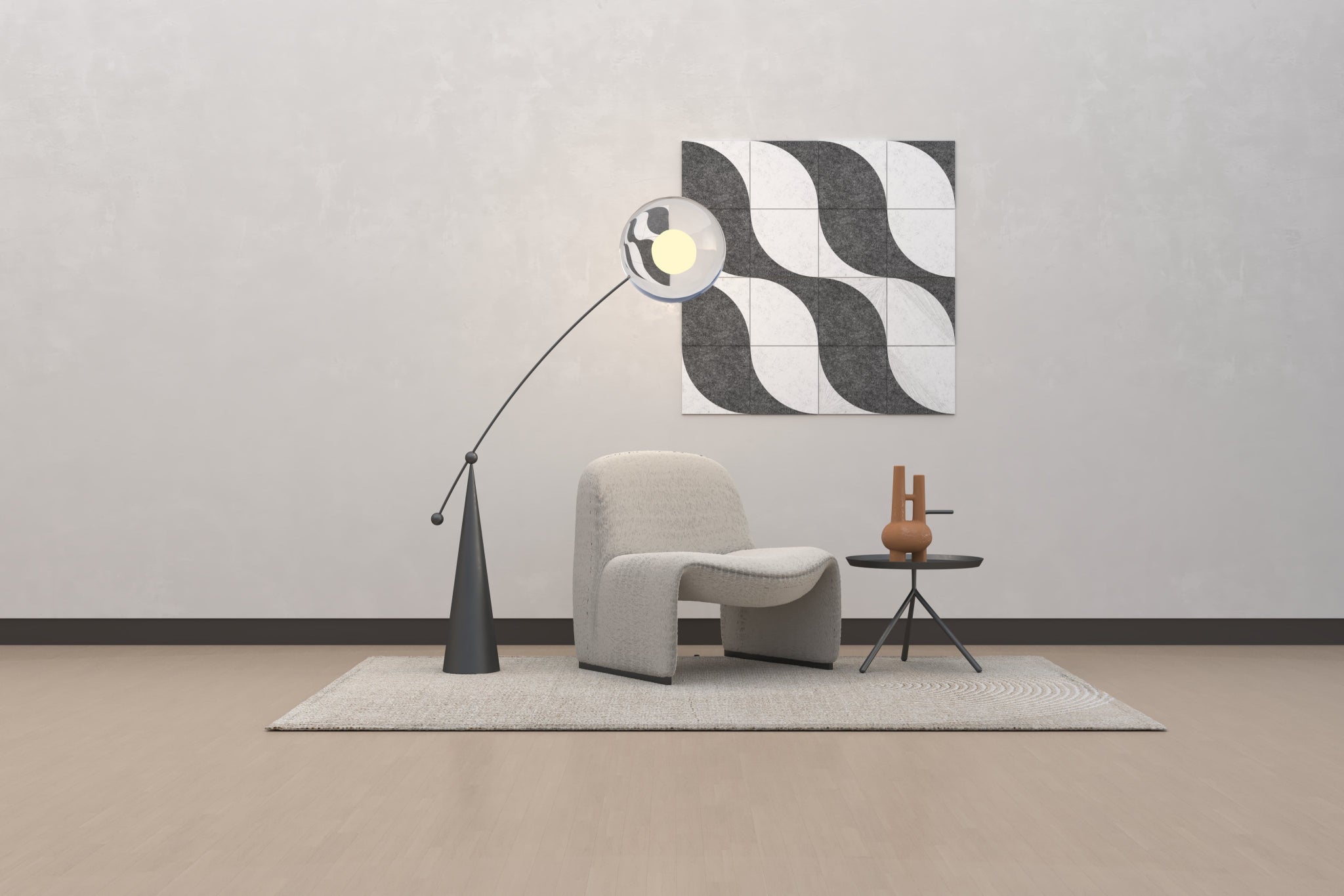Experience perfect acoustics and create a finely tuned sound environment optimized just for you. The first crucial step in designing a comfortable soundscape is to calculate the ideal area required for acoustic panels. This informative guide offers a step-by-step process to calculate the ideal number of acoustic panels needed.
Understanding the Benefits and Functionality of Acoustic Panels
Acoustic panels, also known as sound-absorbing panels, are devices designed to improve room acoustics. Made from PET fibers, Lubad acoustic panels use sound absorption to mitigate issues caused by excessive reverberation and sound reflections. These panels convert acoustic energy into subtle heat instead of allowing it to bounce off walls and surfaces, preventing echoes and clarity issues. Depending on their application, acoustic panels are crafted to absorb specific frequency ranges, both high and low.
Besides their sound absorption properties, Lubad acoustic panels are aesthetically designed to enhance room interiors. They double as decorative elements that complement the overall look of a space. Acoustic panels not only improve sound quality but also provide visually appealing design.
Determining the Ideal Area of Acoustic Panels for Your Room
To create your ideal acoustic environment, you need to determine the right area required to absorb the unwanted sound. This process can be challenging due to various factors. Start by considering the physical parameters of your space, how the room will be used, existing acoustics, and your aesthetic preferences. These considerations will guide you in tailoring the number of panels to your specific needs.
Consider the Size and Dimensions of the Room
The size and dimensions of the room play a significant role in determining the number of panels needed. Larger spaces with expansive floor areas and tall ceilings typically require more panels to control excessive reverberation and reflections. Measure the room accurately to understand its size and proportions for calculating panel quantities.
Factor in the Intended Use of the Room
The intended use of the room is another crucial factor in determining acoustic needs. Different spaces, such as home recording studios or casual living rooms, have varying requirements. Analyze how the room will be primarily used to gauge the necessary degree of acoustic treatment.
Evaluate the Existing Acoustics
Evaluate the existing acoustics of the room to identify any problem areas such as flutter echo or uneven frequency response. This assessment will help determine strategic panel placement and appropriate absorption levels.
Consider Aesthetic Preferences
Aesthetic preferences should not be overlooked when choosing acoustic panels. There are various materials, colors, and designs available to match your room's decor. Consider both the desired visual look and optimal sound quality when selecting panels.
Calculating the Area of Acoustic Panels
Once you have considered the key factors impacting your acoustic needs, you can determine the exact number of panels required. A general guideline is to cover around 30% of the room's total hard, reflective surface area with panels. This balance between acoustic control and aesthetics provides a good starting point.
Here are some recommended methods for pinpointing the perfect quantity of panels:
- Use Acoustic Measurement Tools: Utilize analyzers and sound level meters to quantify metrics such as reverberation time and frequency response. This data will help identify specific treatment needs to achieve 30% coverage.
- Calculate Based on Total Room Volume: Multiply the length, width, and height of the room to calculate total room volume. Take 30% of that volume to determine the recommended absorptive area in square footage. Convert this into the equivalent number of acoustic panels needed to cover that area.
- Consider the Purpose of the Room: Adjust the coverage accordingly based on the specific audio purposes of the room. Some spaces may require increased acoustic treatment.
Conclusion
Creating the optimal acoustic environment tailored to your unique space is a worthwhile investment. By considering the size, dimensions, usage, existing acoustics, and aesthetic preferences of your room, you can determine the ideal number of acoustic panels needed. With strategic placement and careful consideration of absorption needs, you can transform your space into a personalized oasis of audio perfection. Enjoy the symphonic clarity of a finely tuned interior soundscape.





